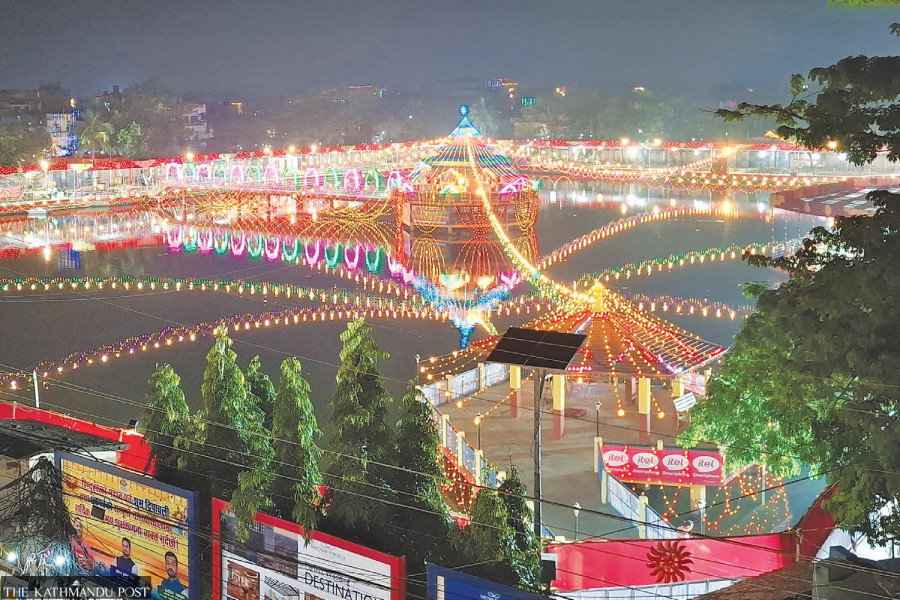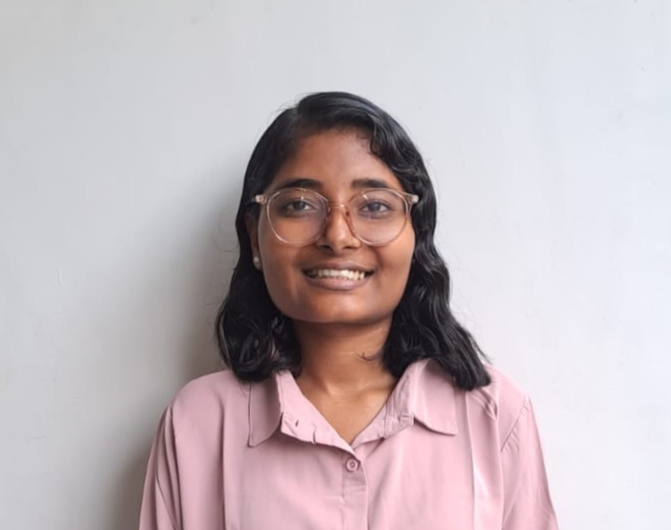Koshi Province
Chhath observers feel overlooked by Kathmandu
The closure of Ranipokhari pond for Chhath puja, and the single-day holiday leave many Chhath devotees feeling unhappy.
Aarati Ray
Over the past few days, Ibrahim Nadaf, a health officer from Ekdara Municipality in Mahottari, has been busy cleaning ponds and building ‘ghats’ in preparation for Chhath Puja, a four-day Hindu festival that began Tuesday. Though a Muslim, his zeal for Chhath Puja is unwavering.
“In our village, we don’t fuss over whether someone is Hindu or Muslim. If you have faith, that’s all that matters,” he says.
Even in Nadaf’s village, where only about 40 households of the 1,400 residents are Muslim, the entire community comes together to celebrate Chhath. “Everyone contributes—cleaning the ponds, decorating, preparing for the puja. Many in the Muslim community observe it, and even those who don’t still help with the preparations,” he said.
After Chhath, Hindu families often share ‘prasad’ with their Muslim neighbours. “Some Muslims receive prasad from Hindus who don’t celebrate Chhath, while other Muslims share it with Hindu families who do,” Nadaf says.
In Nadaf’s village, a Muslim man has been decorating a pond for Chhath for the past three years as part of a pledge for his son’s health. “Many families make such pledges, believing ‘Chhathi Maiya’ [the guardian goddess of the Chhath festival] will grant their wishes,” he said. “This festival has brought us closer, and now we even exchange gifts during Eid.”
Jivesh Jha, author of ‘Beneath the Sun: Equality for Everyone, The Spirit of Chhath Festival’, has observed Chhath since his childhood.
Although he doesn’t fast, his 100-year-old grandmother, Suryamukhi Devi Jha, has observed the rituals for 75 years in their ancestral village of Bathanaha, Mahottari.
For Jha, Chhath symbolises cultural heritage, devotion, and social unity. Jha says, with its simple rituals, where each devotee serves as their own priest, the festival emphasises equality.
“Chhath celebrates an eco-conscious, sustainable way of life,” Jha adds. “Its focus on clean water, sanitation, good health, gender equality, and environmental conservation aligns with the UN’s Sustainable Development Goals. The festival’s rituals, like cleaning water sources and empowering women, promote sustainability and social harmony.”
Jha notes that Chhath has grown beyond Nepal and India to countries like the US and UK.
Basudev Karn, information officer of the Chhath Parva Organising Committee in Sunsari, says that as the participation of hill communities has grown in recent years, 30 percent of the stalls at the Chhath puja ghat in Budhi Khola are now reserved for them.
In 2023, 430 stalls were set up, and this year, around 600 were prepared to accommodate the rising number of worshippers.
Last year, about 130 stalls were occupied by members of hill communities and this year by the second day of Chhath, 180 stalls have already been taken by worshippers from the hills.
According to Karn, Chhath has become a bridge between the Madheshi and hill communities.
“Chhath helps resolve political divisions and reduce prejudice. At Budhi Khola, Madheshi and hill communities often share stalls and celebrate together. Many people from hill communities, new to the festival, team up with Madheshis to learn the rituals,” he says. “Of every five stalls, at least one is shared.”
Karn says around 14 years ago during Chhath observance at Budhi Khola, members of other communities had attempted to disrupt the proceedings. “However, the situation has improved,” he says. Local government support has grown, with ward chairpersons from Sundar Haraincha Municipality and Itahari Sub-Metropolitan City now participating in the festival.
“Although some still try to stir conflict, the atmosphere is much more harmonious,” he adds.
Karn also appreciates the support of local farmers, who delay crop planting until after Chhath to allow the celebrations to take place uninterrupted in Budhi Khola.
While the Chhath festival promotes unity and receives support in areas like Itahari, that is not the case in Kathmandu.
As per Aanand Gupta, the general secretary of the Mahaparva Chhath Organising Committee in Ranipokhari, they submitted a formal petition to the Kathmandu Metropolitan City, requesting that Rani Pokhari be opened for Chhath observers, as it has been in the past.
The request was forwarded by the City’s chief administrative officer, but the committee’s representatives were denied a meeting with the mayor or the mayor’s aide, and no explanation was given. Despite multiple attempts, their calls went unanswered.
Gupta questions Rani Pokhari’s poor accessibility. “Is it a public water body funded by taxpayer money, or the mayor’s private property? Since 2006, the public has celebrated Chhath there. After the 2015 earthquake, the City provided water tankers for the event [because the pond had been drained for restoration], but later restricted access, citing the restoration work. Although the site was reportedly handed over to the City in 2023, this year it has been restricted for the festival, reportedly on the mayor’s direct orders.”
Gupta highlights the significance of Rani Pokhari as a heritage site that promotes social unity, pointing out that Chhath has always been inclusive of various communities. “It’s a vital cultural event, but the mayor’s strict prohibition raises concerns about democratic values. I feel it’s a discrimination against the Madheshi community and Chhath devotees,” he says.
The City had opened Balgopaleshwar Temple, which is in the middle of the Ranipokhari pond, for Bhaitika on Sunday. “If it can be used for Bhaitika, why not for Chhath?”
Gupta is confused about the mayor’s denial. “Maybe the mayor thinks Chhath is only celebrated by Madheshi people and is trying to appease his voters, who are predominantly from the Newar and hill communities,” Gupta suggests.
According to KMC spokesperson Nabin Manandhar, the pond doesn’t fall under KMC’s jurisdiction. “The temple belongs to all, and worshipping there during Bhaitika is an old tradition, while Chhath is relatively new. Only Balgopaleshwar Temple is under our jurisdiction, and the government has not handed over Rani Pokhari to the KMC,” Manandhar explained.
Due to the KMC’s denial, more than 500 worshippers from Asan and Indrachowk will now have to travel to distant ponds like Kamalpokhari, complicating their Chhath celebrations.
Krispi Raman Jaiswal, a 22-year-old Madheshi woman from Sarlahi now living in Kuleshwar, Kathmandu, points out the lack of government recognition for Chhath despite its widespread celebration.
“We only get one day off for Chhath, and on the day of ‘parayan’ [culmination of Chhath fasts], we have to rush to work or school, our celebrations unfinished. Even the Chhath ringtone on Ncell or NTC is hard to get, while Dashain’s ringtone plays days in advance,” she complains.
“Chhath is celebrated by many communities across Nepal, yet we barely get a one-day holiday. Some colleges even hold online classes that day, says Muskan Mandal, a 25-year-old from Janakpur studying in Balkhu. “Why is a nationwide extended holiday given for Dashain even when not everyone celebrates it, while Chhath, which is observed by the majority, is ignored?”




 8.12°C Kathmandu
8.12°C Kathmandu













